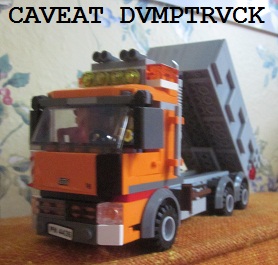The intensive subwayification of the Seoul’s infinite exurbs continues apace – recession? what recession? The old, slightly decrepit-seeming Gyeongui Line (경의선) is being given some coats of new paint (along with massive infrastructure upgrades, etc.) and the first phase of its integration into the Seoul Metro System took effect on July 1st.
The Gyeongui Line is interesting for both historical and personal reasons. Historically, the current Gyeongui Line is the rump end of the old Seoul-to-Pyongyang line that was the first railroad to open in Korea, in around 1906. With the closed border since 1950 or so, it ends a few kilometers south of Panmunjeom and the DMZ at Imjingang. Since then, it has functioned as the northwest suburban commuter rail line, but it’s name still implies it makes it to the Chinese border (Gyeong is “capital,” as in Seoul, and ui is short for Sinuiju – by the wacky rules for Korean acronyms – hence Gyeongui means “Capital and Chinese Border City Railroad”). I wrote about taking it out to Imjingang in October, 2007.
It’s interesting to me for personal reasons, because when I was in the US Army and stationed at Camp Edwards, whenever I wanted to go into Seoul during a day-long liberty, I would take a taxi to Munsan station and take the Gyeongui line into the city. That’s why I can actually say that I had been in Ilsan way back in 1991, which always brings Ooo’s and Ahh’s of amazement when I report this to the kids. It’s definitely a changed place. In 1991, Ilsan was a village of maybe 5000 surrounded by hills and rice paddies, a whistle stop on the commuter railroad, still beyond the edge of the megalopolis. Now it’s been reengineered as a “New City,” and the districts that are refered to colloquially as “Ilsan” include more than 500,000 residents, almost half of the Goyang municipality.
Anyway, starting July 1st, the Gyeongui Line between “Digital Media City Station” (on Line 6 near the World Cup stadium) and Munsan has now been fully integrated to the Seoul subway. Rather than sporadic-seeming once-hourly service, the trains zip by 4-8 times an hour, and you can pay with the same “t-money” card that you use for the rest of the subway system, with barrier-free, clearly marked transfers to the other lines at Daegok and Digital Media City. For a subwayophile like myself, that’s cool, and it’s cool to see an old line “grandfathered in” that way.
To celebrate, today I took the orange line (line 3) that goes by my house a few stops down to Daegok, and changed to the Gyeongui line. I took it out to Geumchon. It was a hot, humid day, with occasional strong winds that smelled like the ripe standing water of all the rice paddies to the north and west, and had just the hint of 10000 pots of kimchi fermenting on rooftops or apartment balconies, as well. The “smell of Korea.”
Now, in the fall of 2007 I wrote about taking the Gyeongui line out to Imjingang and trying to find my old Army base. I thought maybe I’d located it. But I wasn’t certain… the pace of urbanization has been so fast in this region, and I knew it had been closed. Maybe it had been turned into a mini mall.
But I have subsequently spent some time studying the increasingly clear images of the area on Google Earth, and I had become conviced that my old base lay just north of the limit of old Geumchon (which doesn’t jive with my memories, because no one ever mentioned Geumchon to my recollection… we always went to Paju or Munsan… it’s possible Geumchon was basically a nothing-village at that point, though). Anyway, I took the train to Geumchon, got off, and started walking north.
Sure enough. There it was. My old base, Camp Edwards, all shuttered up, overgrown with weeds, with a lone watchman at the main gate. Here’s a picture of the main gate.
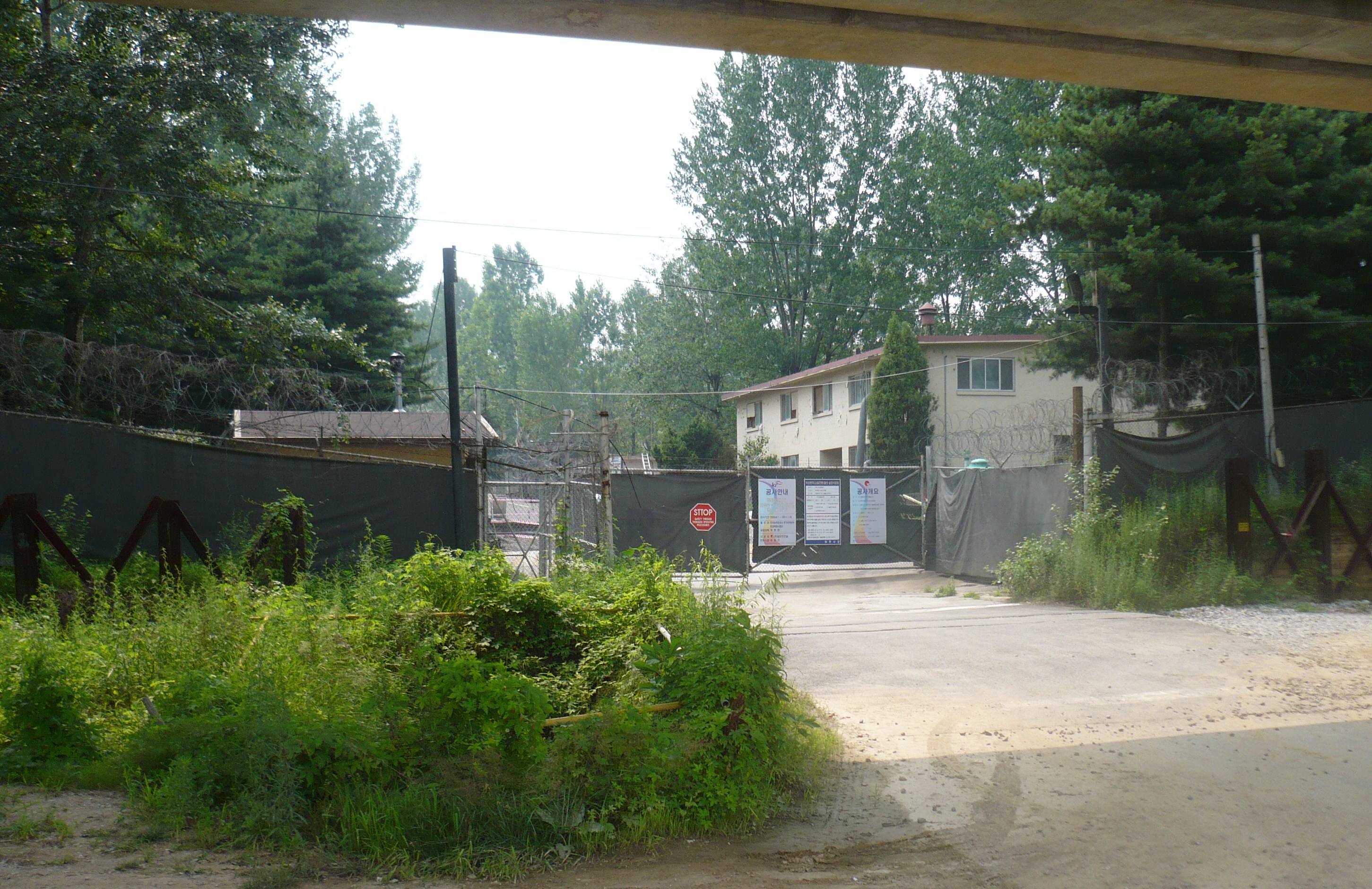
Inside the gate, you can see the remains of the Alpha Company barracks (cooks’ company). Note that the old Gyeongui line tracks ran right in front of the gate… basically, the railroad crossing gate and the gate manned by the Korean policemen at the base entrance were one and the same. In the picture, you don’t see the railroad tracks, because they’ve been elevated. They were right above me, where I stood. That was different.
But the “tank traps” on the MSR were the same.

It’s not called “the MSR” anymore – that stands for “Military Supply Route” and was US Army lingo for Highway 1, which was the fourlane boulevard that parallels the Gyeongui line all the way from Seoul to Imjingang (where the DMZ puts an end to civilian traffic). I don’t know what exactly the right term for those tank traps is, but the idea is that they’re filled with rubble and dynamite, and if the North Koreans come charging down the MSR, all the tank traps (strategically positioned every few kilometers over all highways) get blown, preventing easy access for all those North Korean tanks.
Looking the other way from the tank traps over the highway, you see the concrete obstacles planted like gravestones in the fields to the side of the highway.
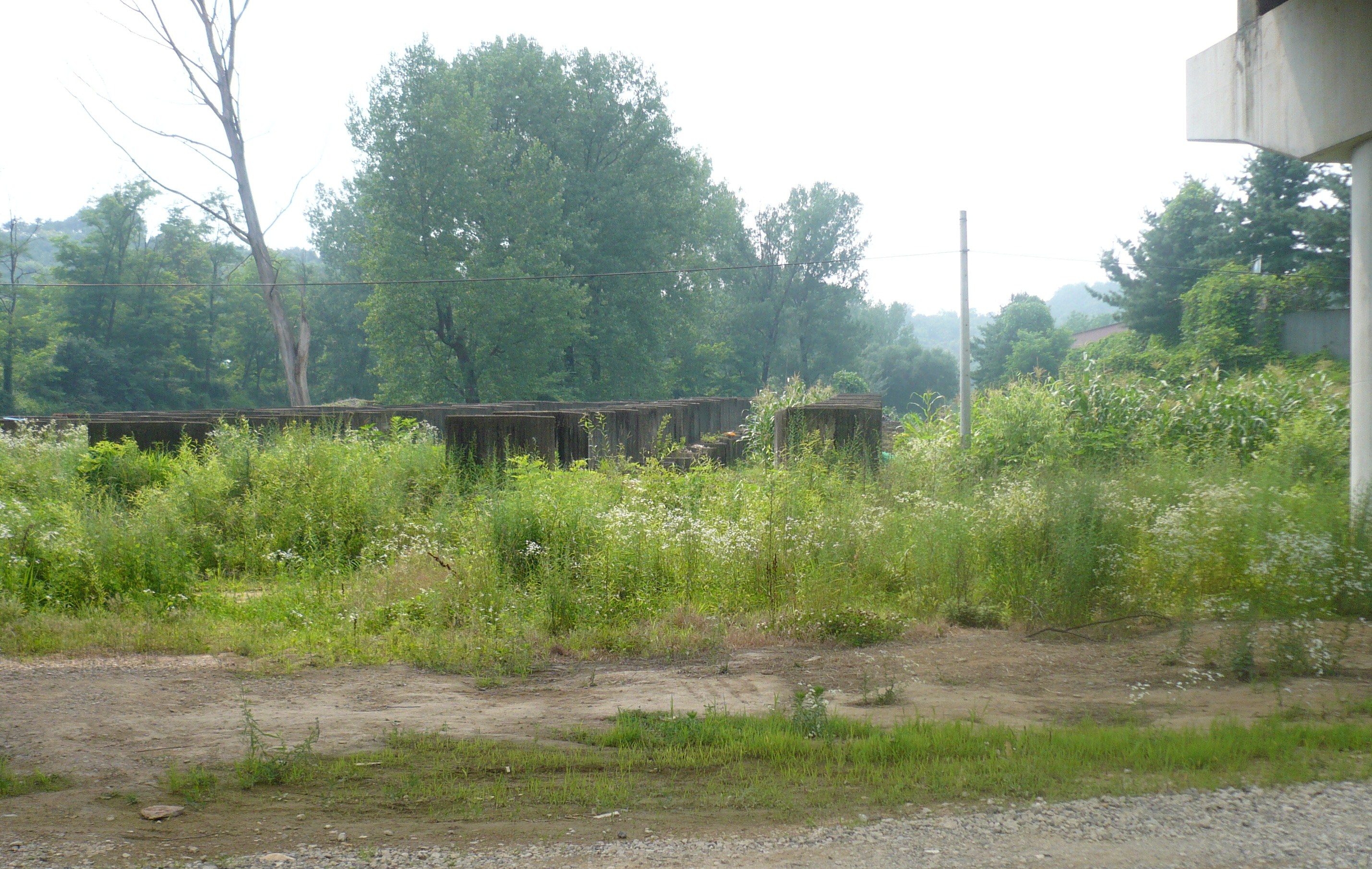
The whole infrastructure is no longer well maintained as far as I can figure out … there are many places where there are modern bridges over these old tank barriers, etc. Then again, maybe all the modern bridges are embedded with dynamite, too, as the old urban myth alleges is the case for all the bridges across the Han River.
I walked past my old base, feeling a bit of nostalgia, but a sense of closure, too. Nice to see the crappy old place overgrown with weeds. I’ve outlasted it! Below, there’s a picture I took looking west from a pile of railroad ties under the now-elevated Gyeongui tracks.
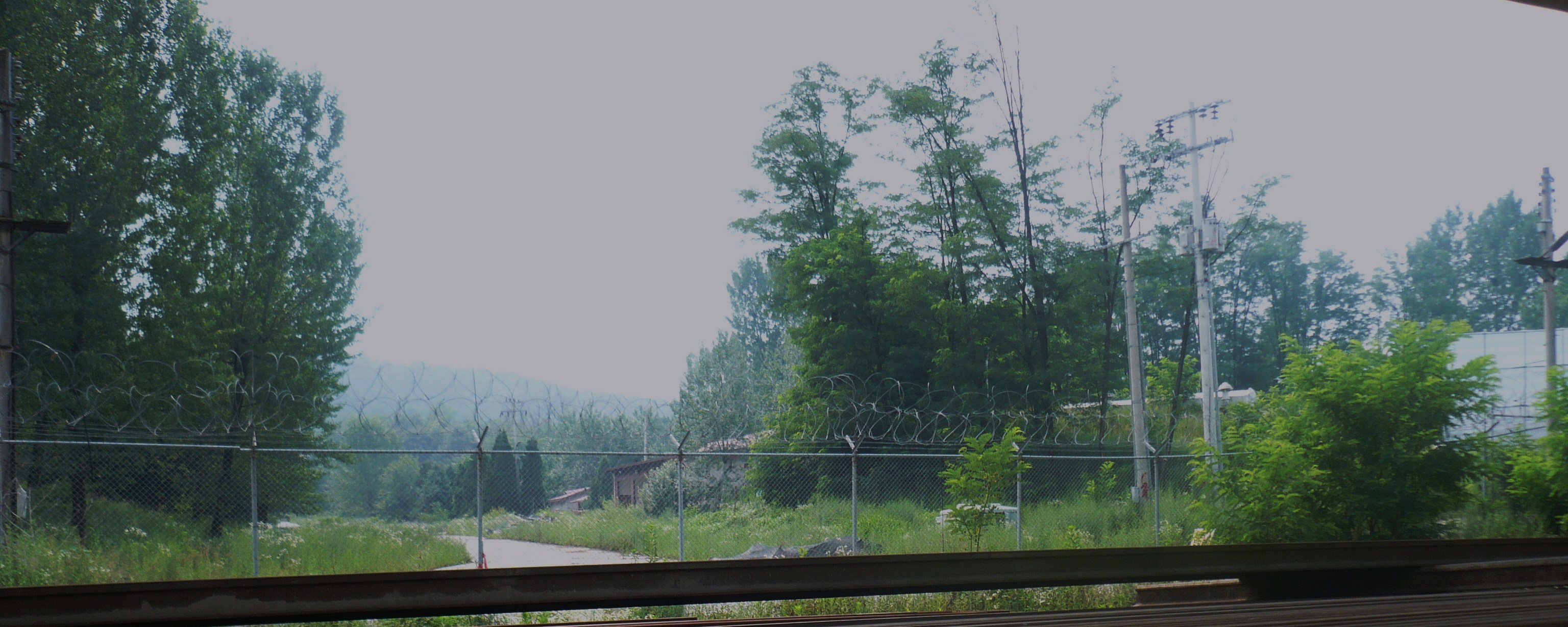
You can just make out the brownish structure in the center, which was the old Bravo Company 296th Support Battalion motor pool, where I labored under the despotic and corrupt Sgt Wise for almost a year. And in the foreground, but behind the concertina fencing, you can see a bit of the “track.” That was where we did our two-mile runs… a little half mile loop on level ground, in circles around the warehouse (which appeared to be missing, now). I have vivid memories of that incredibly boring run. It was only on rare occasions that we got to do company runs off-post, up down and around the countryside.
I kept walking north along the MSR (er.. Highway 1). The first left turn off the highway, going north, used to have a little ramen joint on the corner right across the railroad tracks. I think that’s where I was first introduced to that Korean-military delicacy: spicy ramen with cheez-whiz. Now, as you can see, it appears that they’ve built an office park there.
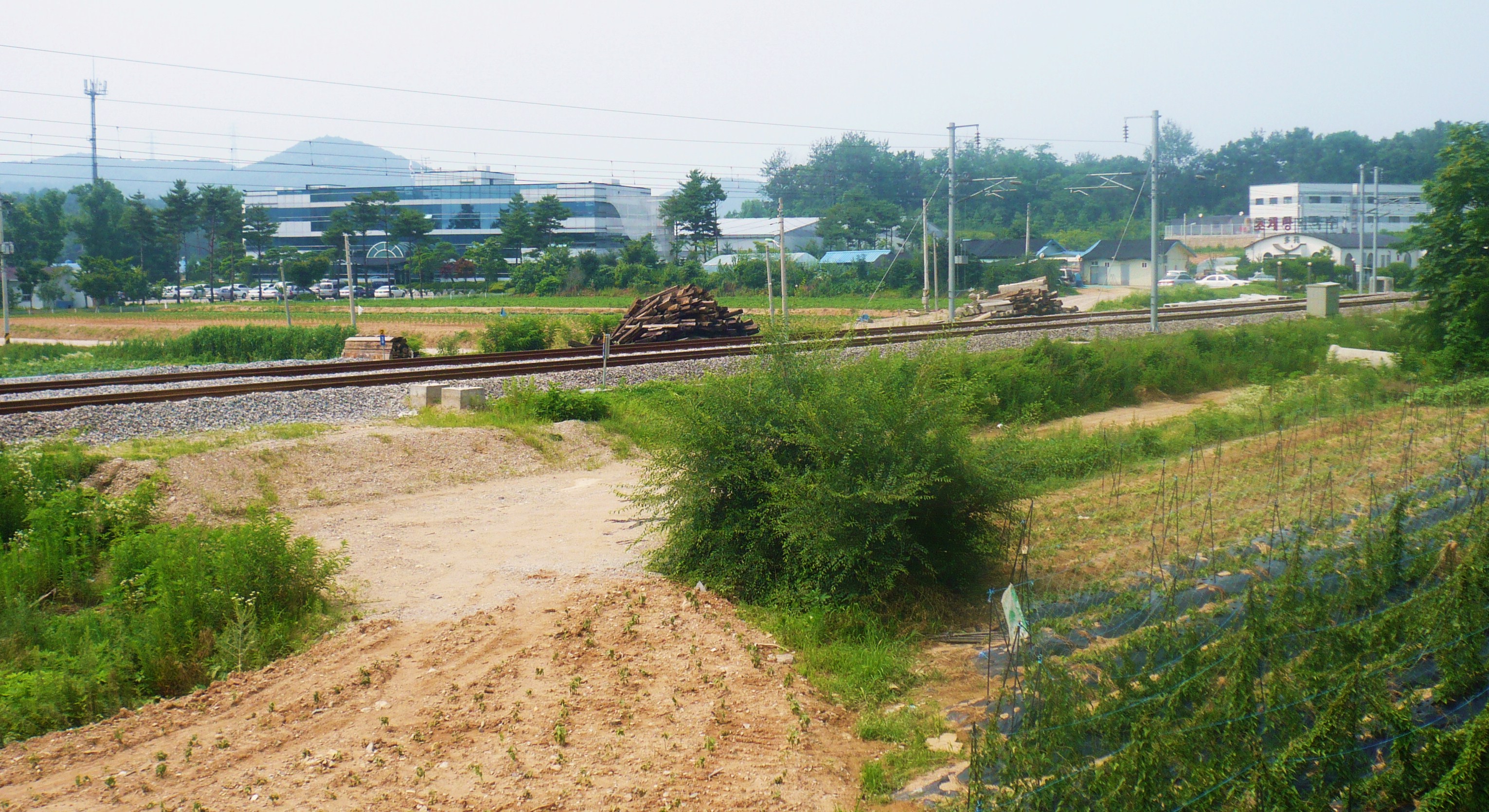
Finally, I reached a place called Wollongyeok (Wollong Station). I’m confident that this station on the Gyeongui line didn’t exist, before. It’s an addition, part of the densification of the commuter line as part of integrating it to a subway system. But it was convenient to find it. I took this picture from the little hill walking down toward it, because I like that you can see the huge highway sign with an arrow pointing the way to Panmunjeom.
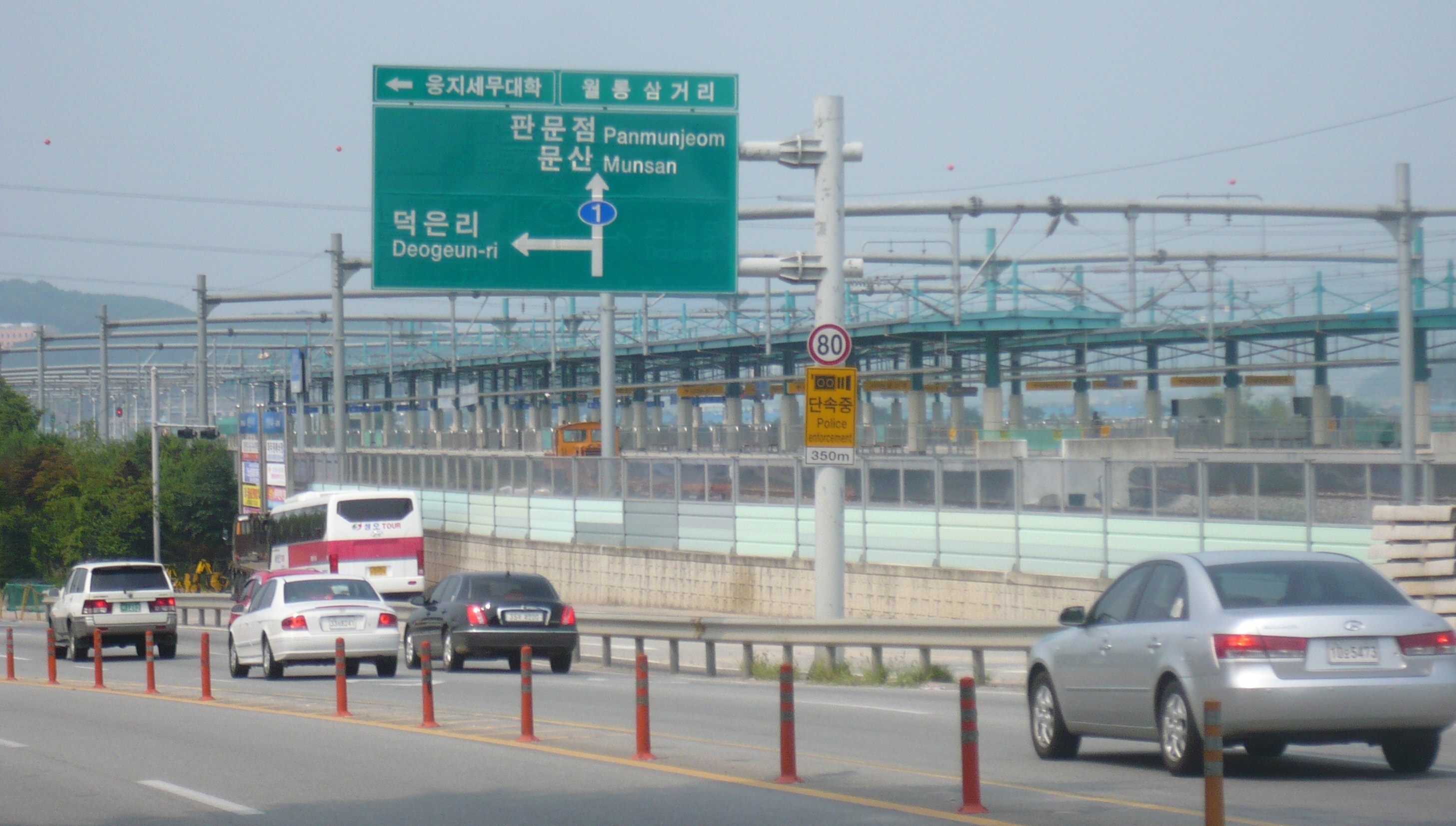
Panmunjeom is a tiny village. Technically speaking, since 1950, it has zero actual civilian residents – it’s where the North and South face each other, and they have little meetings if things are too tense to actually allow each other to cross. And since nothing in South Korean signage admits the existence of an actual border, the only way to know when you’re getting close is when you start seeing signs for Panmunjeom. So I like the sign because you see that here you are, at a nice modern-looking suburban railway station, within a few kilometers of North Korea.
And that brings me to…. So, life so close to North Korea, what’s that like? As a bird flies, my apartment in Manhattanny Ilsan lies about 10 km from the North Korean border. It’s more like 25 if you drive, because of the twists of the Imjin river and of the line itself. But it’s weird sometimes to think how close it is, and how much the people here seem to be either ignorant or in denial – or some weird symbiosis of those two mental states.
Actually, despite all the sabre rattling (and missle-launching and nuke-testing) to the north, no one in the circle of people I interact with seems in the least concerned. This is just the way it always has been, with the north. Weird, scary, unstable… but not, in the end, something that is likely ever to change. Those giant armies facing each other — the high-tech-and-armed-to-the-teeth South and the 2-million-cannon-fodder-plus-a-coupla-handy-WMD-(but-nevertheless-noticeably-incompetent) North – they’ve been glaring at each other for almost 60 years now. It feels very much like “status quo forever.”
And frankly, if it’s nukes you’re worried about, Ilsan is THE safest place outside of North Korea to be, if you think about it. Kim Jong-il may be a wack job, but he’s not gonna nuke the one spot in South Korea that’s practically within walking-distance of a major North Korean city (namely, Kaeseong). As a point of fact, I very much doubt there’s any tactical or strategic scenario in which the North would nuke the South. The nukes are for those “damned foreigners” – i.e. Japan and the US, largely. The South is not foreign, just misguided. It doesn’t need nuking… just reeducation. If things got really, really bad, and the North launched some kind of preemptive invasion of the South, Ilsan would definitely be overrun. But from a tactical standpoint, it seems to me that it is literally so close to the line that it would be behind the line before anyone knew what was happening (and despite those decrepit tank traps).
How things would play from there, who knows? It could end up very grim… I imagine the ways in which seemingly well-developed and relatively westernized Yugoslavia decayed into chaos and civil war in the 1990’s. It’s not impossible, here. But… well, it’s not something worth worrying about. Terrible disasters are possible, whether human or natural, no matter where one chooses to live. In any event, consumer culture is so deeply rooted in the South Korean psyche, now, that I wouldn’t envy any effort on the part of the North to absorb or reeducate the South. It would end up a kind of pyrrhic victory, perhaps. Nor should we underestimate the strength of the South’s military and of its no doubt innumerable contingency plans.
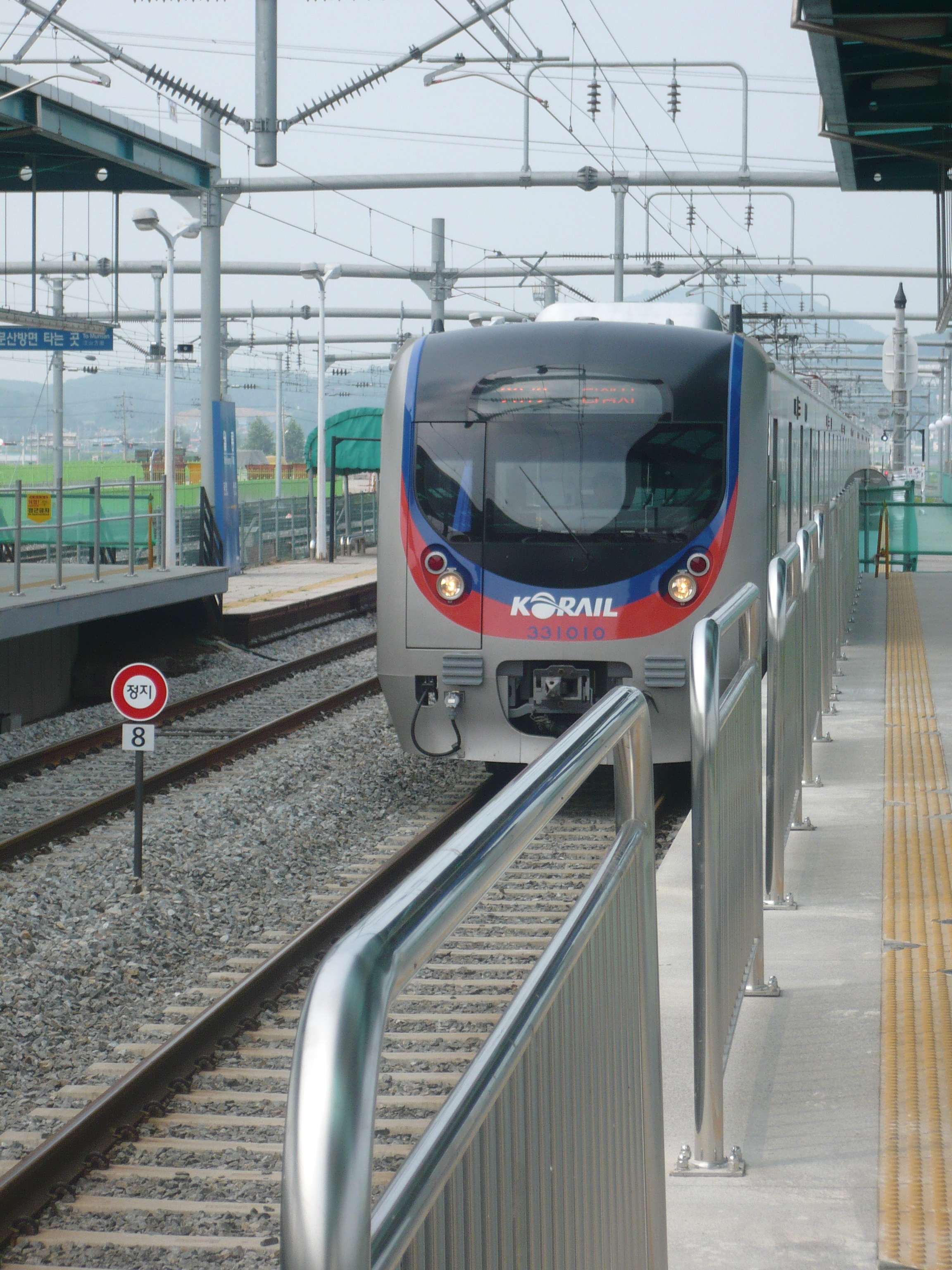
![]()
